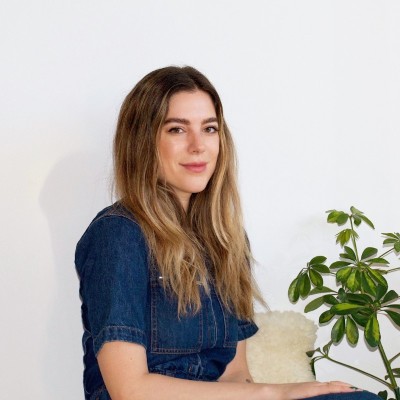Why meditate?
Before we jump into meditation for beginners (and how to get started with meditating), let’s cover why you might want to start a meditation practice in the first place.
Research shows that meditation has a huge list of benefits, including:
Meditation has also been found to assist with stress, support social connectedness, and support emotional resilience...among other benefits. Basically, meditation can help support your physical health, emotional health, mental health, and social health, making it a powerhouse practice to incorporate into your wellness routine.* (1,2,3)
Meditation for beginners: a how-to guide
The basics of mindfulness meditation are simple. “Let your body relax. Bring you attention to your breath...and rest your attention there,” says Wade Brill, a mindfulness facilitator trained through the Semel Institute of Neuroscience and Human Behavior at UCLA. “Notice when your mind wanders to a thought…[acknowledge the thought] and then bring your attention back to the breath.”
That’s it! Relax, focus your attention on your breath, and if you notice your mind starts to wander, acknowledge it and gently bring your attention back to the breath.
If it’s hard to focus at first, don’t worry. A wandering mind is to be totally expected, especially at first. Like anything, meditation takes practice. “You can think of it as doing sit-ups for your mind,” says Brill. “We are building stronger ‘mindfulness muscles’ so that we can learn to be more present, kind, and curious.”
When you’re just starting, try meditating for two minutes—then slowly increase the time as focusing your attention gets easier. “When two minutes of practice feels like a piece of cake, add on one more minute,” says Brill. “Slowly increase your time commitment as you would increase the weights you would pick up at the gym.”
Work your way up to 15 to 30 minutes per day (or whatever feels constructive to you)—and, voilà! You’ve got a meditation practice.
Tips for making meditation a habit
Now that you've got the gist, here are a few additional pointers to keep in mind:
Identify (and let go of) your misconceptions about meditation.
Chances are, you have a lot of misconceptions about what it takes to be “good” at meditation. But if you want to make meditation a habit, it’s important to relinquish any expectations about how it should go.
“Write down or share out loud any assumptions or limiting beliefs you have about mindfulness or meditation,” says Brill. “For instance, you have to practice for a long time to receive any benefits, or you can only meditate while outside, or you have to sit on a cushion.”
The truth is, you don’t need anything to get started with meditation. You don’t need a fancy meditation cushion or hours every day to practice. All you need to do is sit down, close your eyes, and actually do it.
“Know that the practice of mindfulness is to be present in every moment as it unfolds with a kind and curious attitude,” says Brill.
Create consistency.
When you’re trying to form a new habit, consistency is key. “It is helpful, at least in the beginning, to pick a space and time of day you want to commit to a meditation practice,” says Brill.
For example, you might meditate in your office every day at 9am before you start your workday—or at 10pm in your bedroom every night before you go to sleep. When you practice at the same time, and in the same place every day, it will help your brain establish it as a habit—and before you know it, your daily meditation will feel effortless.
By the way, starting a new habit can be tough—and there might be days (or weeks!) when you don’t find the time to meditate. But if you notice you’ve fallen off the wagon, just get right back on.
“Anytime you notice you fall out of alignment with this habit, remember why you want to be meditating and then start again with no judgment or inner criticism,” says Brill.
Find the form of meditation that works for you.
If mindfulness meditation doesn’t speak to you, you can also experiment with other types of meditation, like guided meditation, loving-kindness meditation, or walking meditation—or you could try a meditation app (like Headspace) or working with a meditation teacher. There’s no right or wrong way to meditate; the important thing is finding a practice that works for you—and then making that practice a habit.
References:
- Zeidan, Fadel; Johnson, Susan; Diamond, Bruce; David, Zhanna; Goolkasian, Paul. Mindfulness meditation...Evidence of brief mental training. Consciousness and Cognition. Volume 19, Issue 2, June 2010, Pages 597-605. Retrieved from Science Direct.
- Hutcherson, C. A., Seppala, E. M., & Gross, J. J. (2008). Loving-kindness meditation ...social connectedness. Emotion, 8(5), 720–724.
- Bajaj, Badri; Pande, Neerja. 2016, April. Mediating role of resilience in the impact of mindfulness on life satisfaction and affect as indices of subjective well-being. Personality and Individual Differences. Volume 93, April 2016, Pages 63-67.











